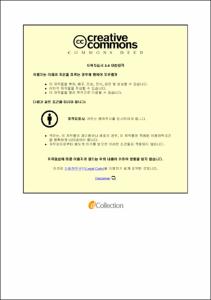Ulsan Univ. Repository
Thesis
General Graduate School
Occupational Safety and Health Studies
1. Theses(Master)
산업안전보건교육 현업적용도에 영향을 미치는 요인에 관한 연구
- Abstract
- Object: This study attempted to identify the influencing factors on the learning transfer of occupational safety and health education, to identify the influencing factors that should be focused, and to make the occupational safety and health education contribute to the prevention of industrial accidents based on the results.
Method: Through prior research, a total of 6 factors, including 3 factors for personal characteristics (self-efficacy, learning motivation, and transfer motivation) and 3 factors for education and training program characteristics(job relevance, instructor competence, and education and training environment), were set as factors influencing the learning transfer. 300 people who completed the 2019 Occupational Safety and Health Education Center were selected and surveyed, and the collected data were analyzed using the SPSS 18.0 statistical program.
Results: The level of transfer was generally high (4.00) with an average of 4.12. By workplace size, 50 or more had higher learning transfer than less than 50, and by employment period, more than 10 years had higher learning transfer than less than 10 years. The construction industry showed higher learning transfer than other industries. In the results of correlation analysis, Job relevance showed the highest correlation with learning transfer. In the results of multiple linear regression analysis, it was found that among the individual characteristics of educational participants, self-efficacy and transfer motivation, excluding learning motivation, had a positive (+) effect on learning transfer. The characteristics of education and training programs (job relevance, instructor ability, education and training environment) all had a positive (+) effect on learning transfer.
Conclusions: This study is meaningful in that it has accumulated empirical data in the field of occupational safety and health education and laid the foundation for further research. In order to prevent industrial accidents, it should be recognized that education participants with high self-efficacy and motivation to transfer must be selected, various curriculums with high job relevance must be developed, competent instructors must be selected, and education and training environments must be continuously improved.|본 연구에서는 산업안전보건교육 현업적용도에 미치는 영향요인을 파악하여 중점을 두어야 하는 영향요인을 규명하고 그 결과를 바탕으로 산업안전보건교육이 산업재해예방에 기여할 수 있도록 하고자 하였다.
선행연구를 통하여 교육참가자 개인적 특성(자기효능감, 학습동기, 전이동기) 3가지와 교육훈련 프로그램 특성(직무연관성, 강사능력, 교육훈련환경) 3가지 등 6가지를 현업적용도의 영향요인으로 설정하였다. 2019년도 산업안전보건교육원의 교육참가자 300명을 선정하여 설문하였고, 수집된 설문지는 SPSS 18.0 통계프로그램을 이용하여 분석하였다. 기술통계분석, 독립표본 t-검정 및 일원배치 분산분석(One-way ANOVA)과 산업안전보건교육의 현업적용도 영향요인이 현업적용도에 미치는 영향정도를 파악하기 위하여 다중회귀분석(Multiple linear regression analysis)을 실시하였다.
현업적용도 수준은 평균 4.12로 대체로 높음(4.00)이상의 수준으로 나타났다. 사업장 규모별로는 50인 이상이 50인 미만보다, 재직기간은 10년 이상이 10년 미만보다 현업적용도가 높았으며, 건설업이 그 외의 업종보다 현업적용도가 높은 것으로 나타났다. 상관관계를 분석한 결과에서는 직무연관성이 현업적용도와 상관관계가 가장 높게 나타났다. 다중회귀분석을 실시한 결과에서는 교육참가자 개인적 특성 중학습동기를 제외한 자기효능감과 전이동기가 현업적용도와 정(+)적인 영향을 미치는 것으로 나타났으며, 교육훈련 프로그램 특성(직무연관성, 강사능력, 교육훈련환경)은 모두 현업적용도와 정(+)적인 영향을 미치는 것으로 나타났다.
본 연구는 산업안전보건교육분야에 실증적 데이터를 축적하고 추가연구의 토대를 마련했다는데 의의가 있다. 산업재해예방을 위하여 자기효능감과 전이동기가 높은 교육참가자의 선발, 직무연관성이 높은 다양한 교육과정 개발, 능력있는 강사의 선정, 교육훈련환경의 개선 등이 현업적용도를 결정하는 요인이라는 것을 인식하고 산업안전보건교육을 운영해야 한다.
- Issued Date
- 2021
- Awarded Date
- 2021-02
- Type
- Dissertation
- Alternative Author(s)
- Lee Joo Gab
- Affiliation
- 울산대학교
- Department
- 일반대학원 안전보건전문학과
- Advisor
- 김재균
- Degree
- Master
- Publisher
- 울산대학교 일반대학원 안전보건전문학과
- Language
- kor
- Appears in Collections:
- Occupational Safety and Health Studies > 1. Theses(Master)
- 파일 목록
-
-
Download
 200000364275.pdf
기타 데이터 / 1.07 MB / Adobe PDF
200000364275.pdf
기타 데이터 / 1.07 MB / Adobe PDF
-
Items in Repository are protected by copyright, with all rights reserved, unless otherwise indicated.